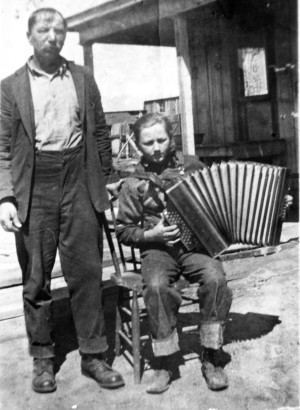If Not Joy Now Then When?
Barbara Hadley, M.A. & Fred Stultz, Ph.D.
Dog Ear Publishing, Paperback, 180 pp $15.95
Reviewed by Annie Dawid
The title of this self-help book, by Pueblo therapists Barbara Hadley and Fred Stultz, of the Pura Vida Voices Counseling Center, recalls the language of the scholar and theologian Rabbi Hillel (30 B.C.-9 A.D.): “If I am not for myself, who will be for me? If I am not for others, what am I? And if not now, when?”
The language beneath the title tells the perspective reader: “This book is different. People are not broken. Change and growth are within each of us. It is time to reclaim and have joy in your life.”
In their personal lives, Hadley and Stultz took their own advice, changing careers and behaviors, to develop far more fulfilling existences than each had enjoyed prior to starting Pura Vida in 2010. This book comes from their own history and subsequent experience with clients in putting into practice their approach, “Discovering to Be Me, a process for discovering and expressing who you truly are.”
In addition to explaining their ideas about how to change one’s life, the authors offer examples from their therapy practice of individuals who have indeed succeeded – sometimes in subtle ways, but others dramatically – in effecting change in their daily lives. “Their stories are testimonials to how one can grow and increasingly find more joy in life.”
Reading about theory put into practice always invites a reader to imagine himself/herself in that person’s shoes. These stories, which comprise the majority of the volume, ask us to empathize with people dealing with the troubles that plague all of us, including dilemmas in relationships, work and other issues, allowing you “to accept who you are as an evolving person in a complex world.”
In the opening chapter, the authors invoke the metaphor of the tree of life:
Imagine that your life is like a large tree. Its structure is a map of your life’s journey. As you stand looking up under the tree, you see how it gains strength from branches that are strong and well placed. Yet, there are branches that are fragile and weak. The branches go everywhere, building a complex and messy structure. As you step back and look at the tree, you see its beauty and understand how it is more than the sum of its parts. The tree lives with courage, gathering strength as it faces the cold of winter, the heat of summer, and the droughts that nature brings.
Images which allow us to visualize abstract concepts help readers understand concepts the authors will eventually illustrate in the personal stories of some of their patients. In addition, the text is supplemented with illustrations of some of these ideas in line drawings by Pattie Fimple. (Adding to her bio note, Hadley and Stultz comment, “Pattie is a wonderful example of a woman who fills up her daily activities with her personal passions!”).
Key to “Discovering to Be Me” are I-images, which the authors explain as:
a collection of personal understandings of who you are at any present moment. I-images are patterns, parts, and pieces that make up the full puzzle within the kaleidoscope of you. Their meaning comes from the constant speech or inner language you have. It’s what you say to yourself, your inner dialogue. I-images expand and coalesce into themes. Themes unite I-images and create the unified being of who you are.
Like any theory, “Discovering to Be Me” involves a lot of terminology. Thankfully, the book includes a glossary at the end, offering brief definitions of expressions that are particular to Hadley’s and Stultz’s practice of therapy. The text also uses quotes from a diverse array of sources to enrich their own writing. Philosopher Ralph Waldo Emerson opines, “What lies behind you and what lies in front of you, pales in comparison to what lies inside of you.” Actor and playwright Harvey Fierstein admonishes, “Never be bullied into silence. Never allow yourself to be made a victim. Accept no one’s definition of your life; define yourself.”




